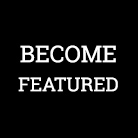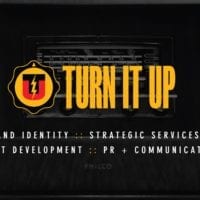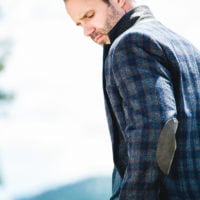It’s 2019. Are We Falling Back Into Gender Clichés? Let’s keep moving forward, in comedy and advertising
By The Denver Egotist / /
If you watched the Grammys this year, you might’ve noticed something odd. For the first time since 2007, the nominees for best comedy album were all men. Brilliant ones, granted—Dave Chappelle, Jim Gaffigan, Patton Oswalt, Chris Rock and Fred Armisen. (Chappelle won.) But still, all dudes.
In a nation of 326 million people, were there no “worthy” female comics? For the love of Maria Bamford, what year is this?
Now, maybe I’m overreacting, craning my neck to hear some kind of “sexism dog whistle” that no one—not even women—heard. But I also couldn’t help but wonder if this innocuous fact means the long-buried corpse known as “Women Aren’t Funny” has been exhumed and is now a living thing again in 2019?
Which would honestly baffle me, because I’ve never known a time when women weren’t funny.
I grew up in the 1970s, widely considered the gold rush of female comedy. Tops for me was The Mary Tyler Moore Show, with Mary, Betty White, Valerie Harper and Cloris Leachman leading a full-on comedy S.W.A.T. team. And of course, Carol Burnett, whose variety show was a revolving door for talents like Lily Tomlin, Bernadette Peters and Madeline Kahn—melting my insular suburban Boston kid’s mind (in which Laurel & Hardy, Richard Pryor, George Carlin, “Archie Bunker” and the guys on M*A*S*H had been the comedy gatekeepers).
Remember, this was an era when men like Johnny Carson ruled with iron, liver-spotted fists. When Carson complained of women comics being “a little ‘aggressive’ for my taste,” he meant: They weren’t the apron-clad, casserole-baking, June Cleaver/Harriet Nelson homemakers of the ’40s and ’50s. This fearless new breed of comic talent openly, and hysterically, blew up everything.
And so, after the Grammys, as much as I tried to focus on more important things like pitchers and catchers reporting to spring training, I couldn’t convince myself that this WAF nonsense isn’t still floating out there, like dust you can only see in certain bad light.
And because this is an advertising site and not Us Weekly, I have two questions:
• Is even a hint of WAF lingering inside a largely progressive, “woke” industry like ours?
• If so, why and what can we do about it?
Okay, that’s three questions.
Which I pose with the following caveat: As your garden-variety White Advertising Man, I fully admit I’ll never understand the frustrating baggage this whole topic might unearth for many women. If that makes me a jackass for even writing this, so be it.
But I did write it, because I feel men should call bullshit on the bullshit-worthy even (perhaps especially) when it comes to women’s issues. Also, America has taken so many shameful, mind-boggling backward steps lately—we’d also assume dressing in blackface wouldn’t be kosher in 2019, right?—why wouldn’t it be plausible that other archaic stereotypes might be making a comeback?
To get an idea of whether advertising people feel that WAF still casts a shadow on our business (or in our ads), I asked around. Here’s what some smart folks from around the country told me:
• Susan Credle, Global Chief Creative Officer, FCB
As a southern woman growing up in the ’70s, I was taught to be polite, not hurt another person’s feelings. Be respectful. Use your words with grace. This upbringing does not allow you to exercise your funny muscle. So when I joined BBDO as a writer, I had to learn fast. I felt like I spoke a different language. Poetry, deep thoughts, nurturing tendencies, sweet sentiments. It was terrifying and, every once in a while, fun to try humor. One of my bosses told me, “Death is easy; comedy is hard.” When am I at my funniest? When I’m in a “safe” environment. My mom thinks I’m hilarious. The more you like me, the funnier I become. Maybe that explains why we have a ways to go. We still have a lot of room to make women in the room feel safe, feel like they can fail or stumble over and into a joke. Can we bring our foreign world of humor to the table versus the usual tropes and clichés? Funny is a sport. The more you practice, the better you get.
• Tiffany Rolfe, U.S Chief Creative Officer, R/GA
“I mean, I may have heard [‘women aren’t funny’] a couple of times in my career. But it’s a total joke … so I just laugh.”
• Mandy Dietz, Freelance Creative Director/Writer:
“I’ve been rewatching Mad Men episodes, and the way Peggy [Olson] comes into her own, but is so marginalized, is spot-on. Women in advertising are still pretty new. Same with comedy. The ’60s/’70s aren’t that long ago. Takes forever to gain equal footing. But in advertising, I think it’s about representation. There are more women creatives and CDs than ever before. So we’re getting more ‘at bats.’ DID I JUST MAKE A SPORTS REFERENCE?? Historically, everyone doing the writing was a white guy, an insular group making themselves laugh. I think that’s changing, albeit slowly. For example, I still haven’t come across a woman director’s reel for comedy, unfortunately. All the go-to funny guys are just that … guys. Hopefully that’ll change, too.”
• Karen Kaplan, Chairman & CEO, Hill Holliday
” ‘Women aren’t funny.’ That’s hilarious.”
• Markham Cronin, Founding Partner/Chief Creative Officer, Markham & Stein
“In advertising, yes, it’s been a problem. We have the dopey dad, the sassy, savvy, smart mom, all these clichéd characters—because the arc of a :30 commercial depends on easily recognizable storytelling devices to land a punch against an audience that’s barely paying attention. And until recently, a ‘funny woman’ hasn’t really been a tool in the commercial toolbox, despite the many examples of genius female comics. (Amy Poehler’s Best Buy spots, Jane Krakowski’s Trop50 and Tina Fey AmEx spots stand out as funny women bucking that trend.) Maybe it’s lazy creative. Maybe it’s just easy to sell. But it’s bullshit that a funny woman doesn’t always fit into our narrative in this day and age. It’s a habit that we are consciously trying to break, and it’s getting better, but there’s a long way to go.”
• Jennifer Hohn, Executive Creative Director, Agency Zero
“In advertising, women are still stuck in the whiplash of how to just be—overcoming focus on their appearance and dealing with mountains of double standards. We must remove those hurdles. Because when women are fully and unapologetically comfortable in their own skin, that’s when the lady hilarity thrives. And I actually think it’s totally critical for men to help convey perspectives they get from women translated through their lenses. Topics become more conversational rather than confrontational. At the Golden Globes, I was so psyched to see they created a Carol Burnett award. Exposing new generations to her and other female comedy legends’ humor helps create more perceived mass on the female side. Turns female comedy nominations into a balanced norm rather than a token anomaly.”
• Robyn Tenenbaum, Associate Creative Director, CPB
“I heard that women in advertising only get 78 percent of the LOLs that men do.”
• Stephen Curry, Executive Creative Director, Lewis Communications
“This whole notion of guys somehow being funnier is just completely foreign to me. Some of the biggest personalities on our creative staff are young women. They’ve energized our creative team and brought more texture to the work. Our differences are part of what make life funny. And if you’re not exploring them, you’re missing out. Maybe it’s not that ‘women aren’t funny,’ but that the people who get to decide what’s funny aren’t diverse enough. Thus the 3 Percent Movement, which is a good thing. That said, I don’t care what equipment you’re born with or upgrade to later: It’s the creative director’s job to put his or her personal preferences aside and think about, ‘What’s funny to the people we’re trying to reach?’ “
• “Kristin,” Producer, a “Name” Agency in Chicago
“I was literally in a meeting a few days ago where two (male) colleagues essentially said that we need a guy to direct a [brand deleted] spot because it ‘needs to be super funny.’ And I’m staring at them like, ‘Are you serious? Three minutes ago I literally just made you laugh so hard coffee shot out your nose, now you’re worrying a woman can’t help make your lame script funny?’ I always kinda shrug it off because you know: paycheck, survival, not wanting to be ‘the PC police’ or creative buzzkill, etc. But inside, my soul died a little bit.”
• Kevin Zimmerman, Editor, Los Angeles
Context: Kevin is a top comedy editor, and I specifically asked: Of the hundreds of spots you’ve cut in 20 years, what percentage starred women in hero comic roles versus playing the “sensible” foil to the funny man?
“10% … at most.”
• Quinn Katherman, Creative Director, CPB
Let me answer your question with another question. Does the stigma that men ARE funny still exist, or can I stop pretending to laugh at their jokes?
Game, set, match … Katherman.
All great thoughts and words. But what about actions? What can we—especially men and/or all senior people with more “power” to affect agency mind-sets and approaches—do to spur more progress?
I’ll try:
1) Let’s be more aware of which projects go to female creatives, particularly younger ones—i.e., not only give the “funny” briefs to dudes. I personally adhere to the “best creative for the job, period” theory. But a reminder never hurts because even the best-intentioned can default to subconsciously “easier” process, muscle memory or comfort levels.
2) Let’s all concept funnier lead roles for women in TV spots and other branding efforts. And not just cast an already-established celeb like Tina Fey, Mindy Kaling or Wanda Sykes and say, “Hey, world, here’s a woman you already ‘accept’ as funny!” No, I’m talking about writing your no-name commercial actress into the “funny hero” role instead of AGAIN making her the straight man. This’ll also mean convincing clients (who can have justified yet entrenched beliefs on their brand skewing “male” or “female”) to also escape their comfort zones. We all have to. But it’s doable.
3) Let’s stop spewing out the cliché “Dumb, hapless husband/babyman gets ‘set straight’ by the responsible, serious wife/woman” concepts. These lazy King of Queens-esque narratives just reinforce stereotypes. Familiar is easier; I’ve written loads of those dogshit scripts, too. But give clients and consumers credit: They can absorb smarter narratives.
And related, this video reminds me of another tangible action: Writing less tone-deaf casting specs. (One actual spec: “We prefer an actor who is not thin; this is a great role for a feminist!” I’ll give you a moment while you Krazy Glue your skull back together.)
4) Let’s collaborate more often with female directors (editors/DPs/engineers/etc.)—folks who bring a whole different perspective and experience to the comedy table. Yes, check out Free the Bid and solutions from the 3 Percent Movement. But also ask agency colleagues—fellow creatives, producers, editors, account people, strategists, business affairs, anyone—about whom they’ve worked with. Scan awards sites like Clio, One Show, Creativity and Cannes for female creatives in the credits of work you like (local Addys, too, can be a treasure trove of hungry, burgeoning talent). Ask recruiters, both indie and agency, about the best women’s books they’ve seen lately. Anything to create more, to quote Mandy above, “at bats.”
5) Finally, let’s all just try harder to—brace yourselves now—not be jerks to each other. Amazed we even still have to say this. But, welp, here we are.
Bottom line: Yes, humor is subjective. We’ve all met staggeringly funny and painfully unfunny people of all genders, colors, shapes and sizes. But despite what happened at the Grammys, I can say with 100 percent certainty that in 2019, any notion that women still “aren’t funny” is, well, downright laughable.
Mark St. Amant is a creative director at CPB.






Comments